Metabolic and Proteomic Perspectives of Augmentation of Nutritional Contents and Plant Defense in Vigna unguiculata
- PMID: 32028654
- PMCID: PMC7072685
- DOI: 10.3390/biom10020224
Metabolic and Proteomic Perspectives of Augmentation of Nutritional Contents and Plant Defense in Vigna unguiculata
Abstract
The current study enlists metabolites of Alstonia scholaris with bioactivities, and the most active compound, 3-(1-methylpyrrolidin-2-yl) pyridine, was selected against Macrophomina phaseolina. Appraisal of the Alstonia metabolites identified the 3-(1-methylpyrrolidin-2-yl) pyridine as a bioactive compound which elevated vitamins and nutritional contents of Vigna unguiculata up to ≥18%, and other physiological parameters up to 28.9%. The bioactive compound (0.1%) upregulated key defense genes, shifted defense metabolism from salicylic acid to jasmonic acid, and induced glucanase enzymes for improved defenses. The structural studies categorized four glucanase-isozymes under beta-glycanases falling in (Trans) glycosidases with TIM beta/alpha-barrel fold. The study determined key-protein factors (Q9SAJ4) for elevated nutritional contents, along with its structural and functional mechanisms, as well as interactions with other loci. The nicotine-docked Q9SAJ4 protein showed a 200% elevated activity and interacted with AT1G79550.2, AT1G12900.1, AT1G13440.1, AT3G04120.1, and AT3G26650.1 loci to ramp up the metabolic processes. Furthermore, the study emphasizes the physiological mechanism involved in the enrichment of the nutritional contents of V. unguiculata. Metabolic studies concluded that increased melibiose and glucose 6-phosphate contents, accompanied by reduced trehalose (-0.9-fold), with sugar drifts to downstream pyruvate biosynthesis and acetyl Co-A metabolism mainly triggered nutritional contents. Hydrogen bonding at residues G.357, G.380, and G.381 docked nicotine with Q9SAJ4 and transformed its bilobed structure for easy exposure toward substrate molecules. The current study augments the nutritional value of edible stuff and supports agriculture-based country economies.
Keywords: Macrophomina phaseolina; chemical-protein docking; defense pathways; glucanase isozyme; nutrition metabolism; phosphoglycerate kinase 3; physicochemical analysis; plant protein modeling; protein active pockets; protein-protein interaction.
Conflict of interest statement
Conflict of Interest: There is no conflict of interest among authors with respect to this manuscript submission.
Figures


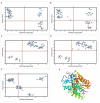


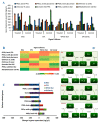
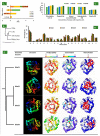

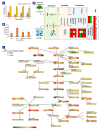
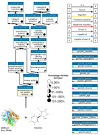
References
-
- Greenhalgh P. The Market Potential for Bambara Groundnut. NRI, Chattam Maritime; Kent, UK: 2000.
-
- Aikins S.H.M., Afuakwa J.J. Growth and dry matter yield responses of cowpea to different sowing depths. ARPN J. Agric. Biol. Sci. 2008;3:50–54.
-
- Kausar T., Sher H.S.I., Ainee A., Norin S. Preparation and quality evaluation of carrot and carrot pomace jam. J. Innov. Biol-Res. 2017;1:8–12.
-
- Shao A., Drewnowski A., Willcox D.C., Krämer L., Lausted C., Eggersdorfer M., Mathers J., Bell J.D., Randolph R.K., Witkamp R., et al. Optimal nutrition and the ever-changing dietary landscape: A conference report. Eur. J. Nutr. 2017;56(Suppl. 1):S1–S21. doi: 10.1007/s00394-017-1460-9. - DOI - PMC - PubMed
Publication types
MeSH terms
Substances
Supplementary concepts
Grants and funding
- 37101916/National Natural Science Foundation of China/International
- 201818B/Guangdong Academy of Agricultural Sciences Dean Fund/International
- 201804020047/Key projects of Guangzhou science and Technology Innovation Committee/International
- 1710023/Special funds for agricultural industry development of Guangzhou/International
LinkOut - more resources
Full Text Sources

